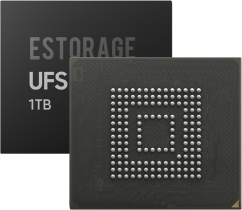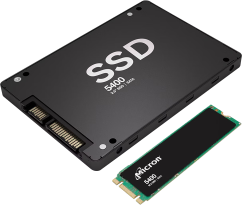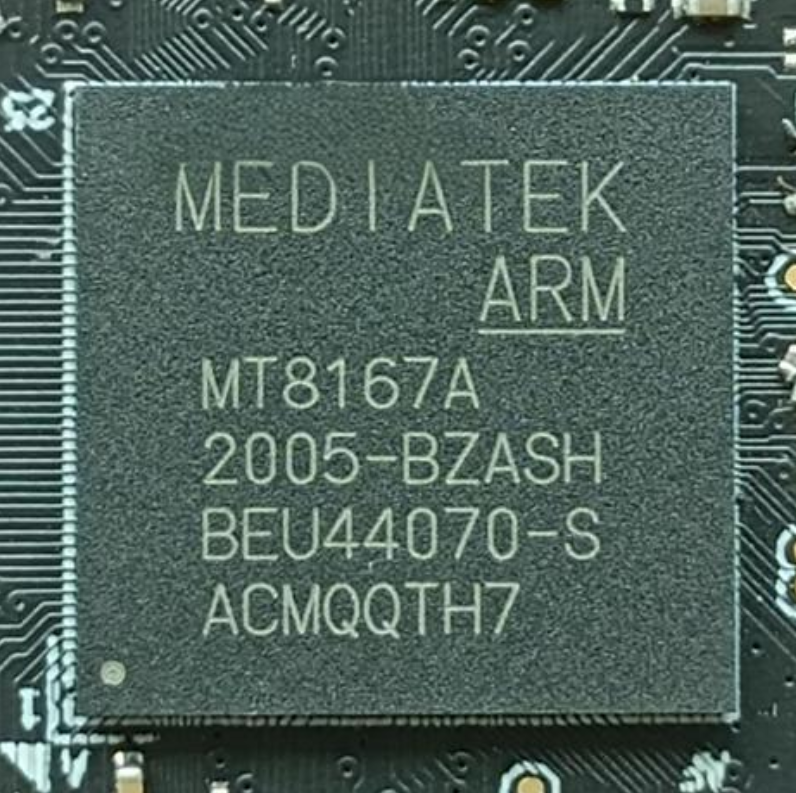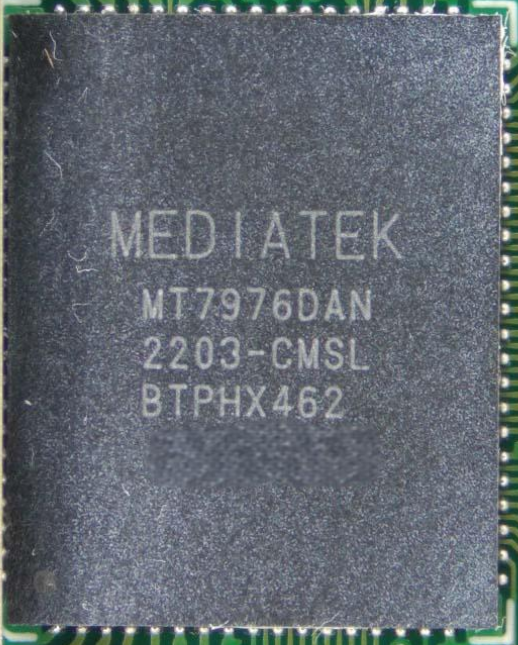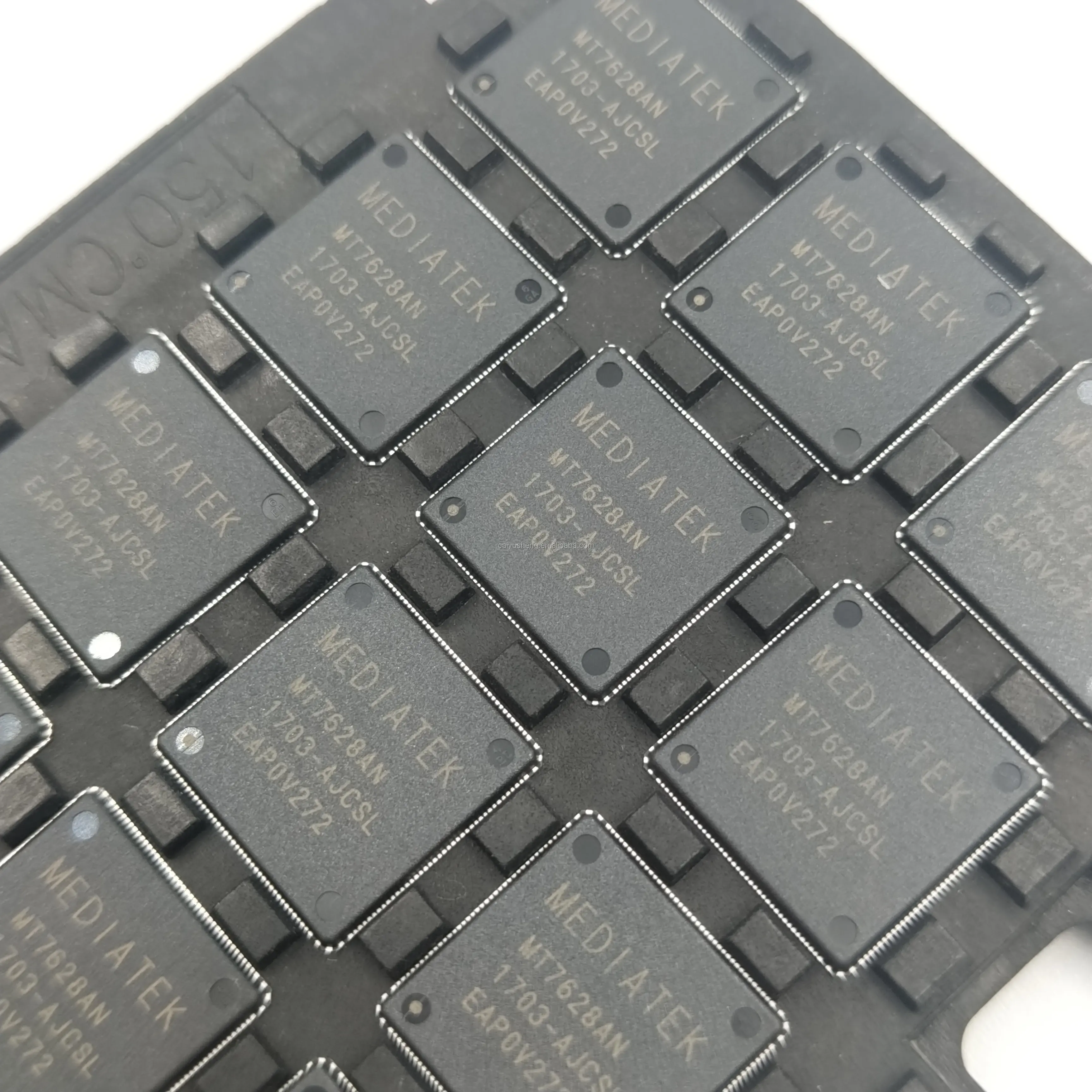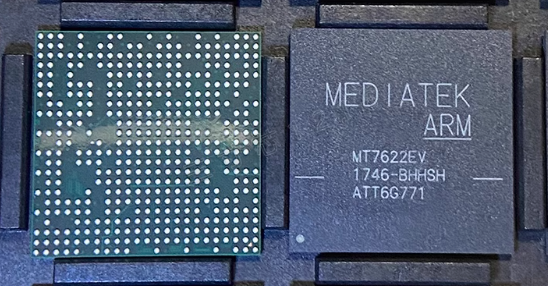Product Description
The MT7550N/ADSL is specifically designed to provide robust, high-speed broadband access over copper telephone lines, supporting both ADSL2+ and VDSL2 standards. As broadband adoption grows, it becomes increasingly important for the network equipment to support higher speeds and greater stability, and the MT7550N/ADSL is built to meet those demands.
The ADSL2+ standard supported by the MT7550N/ADSL delivers downstream speeds of up to 24 Mbps, which is ideal for basic broadband needs such as web browsing, email, and streaming low-to-medium resolution video. On the other hand, VDSL2 support extends the capabilities of the SoC to 100 Mbps, making it ideal for more demanding applications, including high-definition video streaming, video conferencing, and online gaming. The SoC can operate seamlessly across these varying standards, providing flexibility in broadband deployment for both legacy and newer infrastructure.
The MT7550N/ADSL also integrates a high-performance ARM-based processor, which operates at up to 500 MHz, optimizing data forwarding, error correction, and other broadband tasks that are essential to maintaining stable internet connections. The ARM architecture is known for its power efficiency, which is a crucial consideration for devices that are designed to run 24/7, such as modems and routers in residential or small business environments.
For broadband networks to function optimally, it is essential to have quality of service (QoS) mechanisms that ensure smooth data transfer, especially for latency-sensitive applications like VoIP (Voice over IP) and video conferencing. The MT7550N/ADSL supports QoS, which allows the device to prioritize certain types of traffic. This prioritization ensures that activities like video calls or VoIP conversations are not interrupted by background tasks like large file downloads or web browsing, which are less sensitive to delays.
In terms of connectivity, the MT7550N/ADSL features a 10/100 Mbps Ethernet interface for wired connections, allowing devices such as desktop computers, game consoles, or smart TVs to connect to the broadband network via Ethernet cables. The SoC also supports USB 2.0, which can be used for connecting additional peripherals like storage devices or expanding the capabilities of the device, for example, enabling media sharing across a local network.
Although the MT7550N/ADSL does not have built-in Wi-Fi, it is often paired with separate Wi-Fi chips from MediaTek or other vendors. These Wi-Fi chips can provide support for Wi-Fi 4 (802.11n) or Wi-Fi 5 (802.11ac), ensuring that the modem or router can also serve wireless devices in the home or office. This flexibility makes the MT7550N/ADSL suitable for modern broadband deployment where wireless access is a must.
The power management capabilities of the MT7550N/ADSL help ensure that broadband modems and routers remain energy-efficient over time. Devices running continuously need to be designed for low power consumption during idle periods without compromising performance during active use. The MT7550N/ADSL uses techniques like dynamic power scaling to adjust power consumption based on workload, ensuring operational efficiency and reduced costs.
Security is a critical concern in modern networking, and the MT7550N/ADSL addresses this with NAT (Network Address Translation) and built-in firewall support. These features prevent unauthorized access from external sources and help protect the integrity of the network. NAT allows multiple devices in a home or small business to share a single public IP address, making it harder for attackers to directly target specific devices inside the network.
In conclusion, the MediaTek MT7550N/ADSL is a versatile and high-performance SoC designed to support the latest ADSL2+ and VDSL2 standards for broadband connectivity. With its high-speed data processing capabilities, advanced QoS features, power-efficient design, and robust security functions, it is well-suited for a wide range of ADSL and VDSL applications, providing reliable and efficient internet access over copper telephone lines. The MT7550N/ADSL enables seamless broadband experiences, making it ideal for residential and small business networking solutions that require consistent, high-quality internet service.
Specification
Processor:
Architecture: ARM-based core.
Clock Speed: Typically up to 500 MHz, designed for broadband processing tasks.
The ARM-based core in the MT7550N/ADSL is optimized for handling the packet forwarding and network management tasks associated with broadband communication, ensuring efficient data transfer and quality control.
ADSL and VDSL2 Support:
ADSL2+: Provides downstream speeds up to 24 Mbps.
VDSL2: Supports downstream speeds up to 100 Mbps.
The SoC supports ADSL2+, which is backward compatible with ADSL and ADSL2, offering higher performance and longer reach for broadband connections. VDSL2 support enables higher speeds, making the MT7550N/ADSL suitable for faster, next-gen broadband applications.
Networking Interfaces:
Ethernet: 10/100 Mbps Ethernet interface.
USB: Supports USB 2.0 for connecting additional peripherals or extending functionality.
Wi-Fi: While not directly integrated into the MT7550N/ADSL, the SoC is often paired with separate Wi-Fi chips (like MediaTek’s own Wi-Fi solutions) to support Wi-Fi 4 (802.11n) or Wi-Fi 5 (802.11ac), enabling wireless broadband access.
QoS (Quality of Service):
The MT7550N/ADSL supports Quality of Service mechanisms, prioritizing voice, video, and data traffic. This ensures that critical applications like VoIP (Voice over IP) or video conferencing experience minimal latency, jitter, and packet loss, while maintaining smooth data transfer for web browsing or downloading.
Power Management:
Designed with low power consumption in mind, the MT7550N/ADSL provides power-saving modes during idle periods, helping reduce the operational costs of devices like broadband modems and routers. This efficiency is crucial for reducing the overall environmental impact of broadband infrastructure.
Integrated Security:
The MT7550N/ADSL includes built-in security features such as NAT (Network Address Translation) and firewall support to ensure the protection of the home or small business network. This is vital for preventing unauthorized access and protecting sensitive data over broadband connections.



